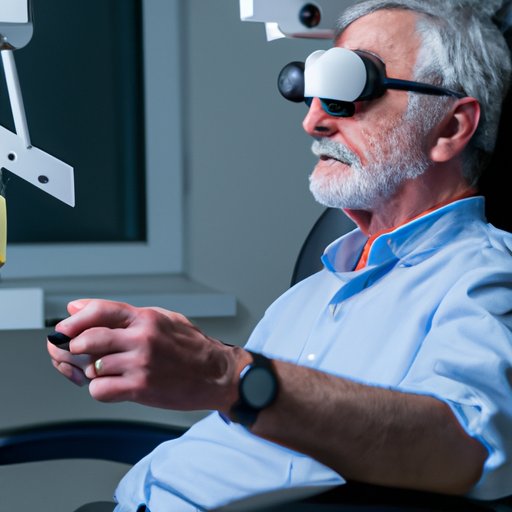
Introduction
Cataract surgery is a common and effective procedure that helps improve eyesight for millions of people every year. However, the surgery requires careful consideration, especially when it comes to activities such as driving. In this article, we will explore the various aspects of driving after cataract surgery, including when it’s safe to drive, managing activities after surgery, and potential risks associated with driving too soon.
What You Need to Know About Driving After Cataract Surgery
Cataract surgery involves the removal of the eye’s natural lens and replacement with an artificial lens. The procedure is usually performed on an outpatient basis and requires minimal downtime. However, it’s essential to discuss with your surgeon and your eye doctor when it’s safe to get behind the wheel after surgery.
Driving requires clear vision, quick reflexes, and good depth perception, all of which can be affected by cataract surgery. That’s why it’s crucial to understand the risks and considerations before driving after surgery.
Driving and Cataract Surgery: When is it Safe to Get Behind the Wheel?
The factors that determine when it’s safe to drive after cataract surgery can vary from person to person. It’s essential to follow your doctor’s recommendations, take enough time for recovery, and allow your body to heal fully before considering driving. Recovery time can vary from person to person.
Recovery from cataract surgery is typically quick, and most people can return to their usual activities within a few days. However, it’s important to listen to your body and take all necessary precautions to prevent any complications or risks before resuming driving and other activities.
Managing Your Activities After Cataract Surgery: The Do’s and Don’ts of Driving
Before resuming driving after cataract surgery, it’s essential to take some precautions to ensure a safe and successful recovery:
- Wear protective eyewear: After cataract surgery, your eyes may be more sensitive to light and glare. Wearing sunglasses or other protective lenses can help protect your eyes from sunlight and other bright lights.
- Avoid driving until cleared by a medical professional: It’s important to consult with your surgeon and eye doctor before resuming driving after cataract surgery. Even if you feel capable of driving, you may still be at risk of complications or visual disturbances.
- Take it slow: If you’re cleared to drive again, start with short and familiar routes before gradually increasing the distance and complexity of your journeys.
- Avoid driving at night: Driving at night after cataract surgery can be difficult, especially if you’re still adjusting to your new lens. Avoid driving at night until you’re fully healed.
- Maintain a safe distance from other cars: Depending on eye sensitivity, it is essential to increase the space margin to avoid possible accidents.
The Impact of Cataract Surgery on Driving: A Comprehensive Guide
Research has shown that cataract surgery can significantly improve one’s ability to drive safely. Studies have documented improvements in visual acuity, contrast sensitivity, and overall driving performance after cataract surgery.
However, the impact of cataract surgery on the individual’s driving ability varies from person to person. Some may experience visual disturbances, such as halos or glares, while others might not. It is crucial to discuss the potential impact of the surgery on your driving with your surgeon and eye doctor beforehand.
Cataract Surgery and Driving: Tips to Get You Back on the Road Safely
If you’re planning to resume driving after cataract surgery, here are some tips to help you ensure a safe and successful return to the road:
- Wait for clearance before driving again
- Start with short and familiar routes
- Avoid driving at night
- Maintain a safe distance from other cars
- Be cautious at intersections and traffic lights
How Long Should You Wait Before Driving after Cataract Surgery?
The amount of time required before you can safely drive after cataract surgery varies from person to person. Generally, it takes about a week to ten days for recovery. Some people may need to wait longer depending on individual factors like healing progress and levels of pain.
Your surgeon and eye doctor will provide you with specific guidance on when you can resume driving, taking into account your unique circumstances. It’s essential to follow this advice to ensure a safe and successful return to driving.
The Risks of Driving Too Soon After Cataract Surgery
If you drive too soon after cataract surgery, you may be at risk of several complications, including:
- Decreased visual acuity
- Distorted vision
- Inability to judge distances and movement
- Increased sensitivity to glare and bright lights
- Reduced ability to react to sudden changes on the road.
Driving before you’ve fully healed can also lead to complications like infection or bleeding, which can affect your overall eye health. That’s why it’s essential to listen to your body and follow your medical team’s advice when it comes to returning to driving.
Conclusion: Moving Forward after Cataract Surgery
If you’re navigating driving after cataract surgery, it’s crucial to be patient and listen to your body. Prioritize your healing process, and remember that your doctor and eye doctor are there to help you with everything you need along the way.
By taking the necessary precautions and precautions, including wearing protective eyewear and gradually resuming activities like driving, you can ensure a successful and safe recovery after cataract surgery.
Overall, it’s important to understand that everyone’s recovery will be different. However, taking the time to learn about and following best practices for driving after cataract surgery can help ensure a safe and happy recovery following this often life-changing procedure.





